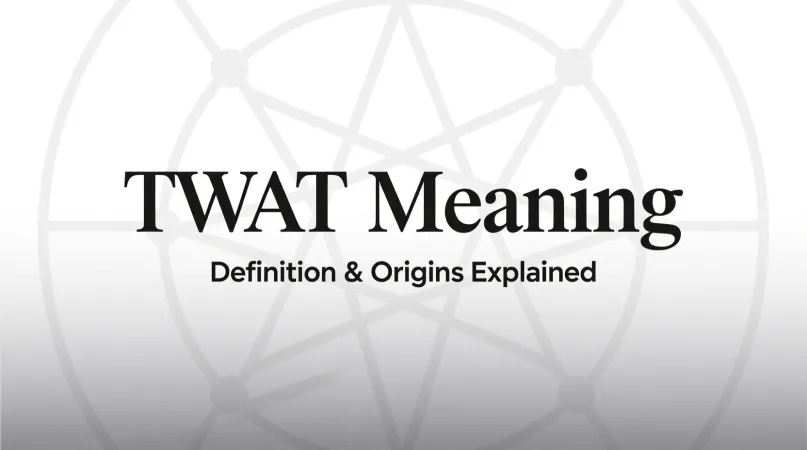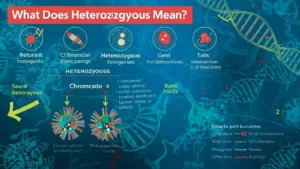Ever been scrolling through texts or social media and suddenly saw “twat” pop up, leaving you scratching your head?
You’re not alone! Some words just hit differently, and figuring out their meaning can be a little tricky, especially when it’s slang.
Don’t worry—we’ve got you covered. In this guide, we’ll break down what “twat” really means, how to use it, and when to avoid it.
By the end, you’ll know exactly what this cheeky little word is all about.
Quick Answer: TWAT means “a foolish or annoying person.” It’s a casual, often rude way of calling someone silly or foolish .
🧠 What Does TWAT Mean in Text?
“TWAT” is a slang term used to describe someone acting foolish, irritating, or ridiculous. It’s not the most polite word, so it’s usually reserved for casual or joking conversations among friends.
Example:
- A: “He totally forgot my birthday!”
- B: “What a twat 😅”
In short: TWAT = a foolish or annoying person = casual insult for silly behavior.
📱 Where Is TWAT Commonly Used?
“TWAT” pops up mainly in informal settings. Here’s where you’re likely to see it:
- 🟢 Texting/DMs – casual convos with friends
- 🟢 Snapchat & Instagram – funny captions or stories
- 🟢 TikTok & Twitter – memes, reaction videos
- 🟢 Gaming chats – playful insults between teammates
Tone: Casual, cheeky, and sometimes humorous; not suitable for formal conversations.
💬 Examples of TWAT in Conversation
Here are some realistic examples of how “twat” might appear in chat:
A: “He ate the last slice of pizza 🍕”
B: “What a twat lol”
A: “I forgot my homework again 🙈”
B: “Classic twat behavior”
A: “She parked in my spot 😤”
B: “Total twat move”
A: “I can’t believe he said that!”
B: “Haha what a twat 😆”
A: “He canceled plans last minute”
B: “Twattish 🤷♂️”
🕓 When to Use and When Not to Use TWAT
✅ When to Use
- With friends in casual conversation
- In joking or playful texts
- On social media memes or reactions
❌ When Not to Use
- Professional emails or work chats
- Serious or sensitive situations
- With people you don’t know well
Comparison Table:
| Context | Example Phrase | Why It Works |
|---|---|---|
| Friend Chat | “No rush, twat 😄” | Casual & friendly |
| Work Chat | “Take your time.” | Polite & professional |
| “Please take your time to review this.” | Formal & clear |
🔄 Similar Slang Words or Alternatives
| Slang | Meaning | When to Use |
| Idiot | Foolish person | Casual, friendly insults |
| Jerk | Rude or annoying person | Playful or light teasing |
| Prat | Silly or foolish person | UK English, informal |
| Moron | Extremely foolish person | Stronger insult, casual |
| Tool | Annoying or foolish person | Informal, humorous |
❓ FAQs:
Q1: Is “twat” offensive?
A1: It can be, depending on context. With friends, it’s usually playful, but avoid in professional or formal settings.
Q2: Can I use “twat” in a flirty way?
A2: Only if both people have a playful, joking dynamic. Otherwise, it can seem rude.
Q3: Is “twat” used worldwide?
A3: Mostly in the UK and English-speaking countries, but younger audiences online use it globally.
Q4: Can “twat” be used jokingly?
A4: Yes! Friends often use it to tease each other lightheartedly.
Q5: Are there softer alternatives?
A5: Words like “silly,” “goof,” or “joker” are polite alternatives for casual teasing.
✅ Conclusion
“TWAT” is a casual slang word for a foolish or annoying person. While it’s mostly used among friends for teasing or humorous effect, it’s definitely not for formal situations.
With these examples and tips, you can now confidently understand and even spot it in texts, chats, and social media without confusion.
Remember: context is everything—use it wisely and playfully!

Oscar Wilde (1854–1900) was an Irish poet, playwright, and wit, famous for his sharp humor, sparkling epigrams, and timeless works like The Picture of Dorian Gray and The Importance of Being Earnest. Celebrated for his clever observations on society and human nature, Wilde’s writing continues to inspire laughter, reflection, and admiration. On jokesplanets.com, we celebrate Wilde’s wit and humor, bringing his legendary cleverness to life for a modern audience who loves smart, funny content.



